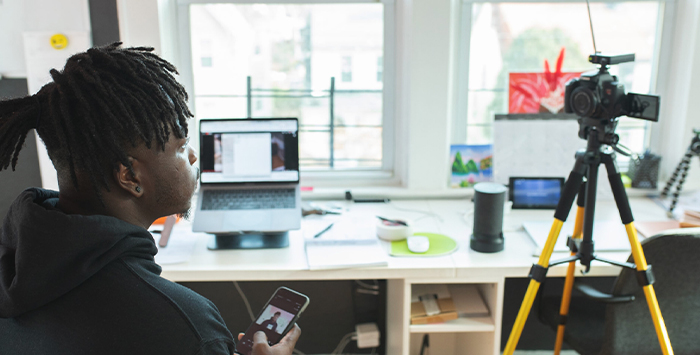
If you’re a fan of popular podcasts, you may have found yourself watching them instead of listening. Podcasting has evolved over the years, and one of the ways it has done so is through the introduction of video podcasts.
Video podcasting is exactly what it sounds like: a podcast that’s done in the form of a video. Some people call it live podcasting. There are many benefits to this type of podcasting. Huge podcasts like The Joe Rogan Experience and Serial can attest to this.
If you’re already into video podcasting 0r have your own podcast, then you probably understand why you need a podcast video camera. If you aren’t, here’s how your podcast can benefit from it. Let me explain briefly.
Some of the benefits of video podcasting are:
It is well known that videos help brands gain trust with their customers. In this case, your customers would be your audience.
People are able to connect more with others when they can see them. Everything from a smile to little hand gestures helps build a deeper connection to your audience and makes them inclined to continue watching your podcasts.
Video podcasts can be shared on YouTube, and YouTube just so happens to be the second largest search engine worldwide and the largest video-sharing platform.
If you create a video podcast that gets attention on video-sharing platforms, viewers will want to check out your podcasts on places like Spotify, Soundcloud, and any other online listening platform your podcast is listed on.
Video podcasting also helps make your advertisements and call-to-actions stand out more.
If you think about it, all social media platforms have a spot for videos, even when they don’t need to.
Many of these platforms try to steer their users toward these spots. Take Instagram, for example. There is a spot for reels and another one for IGTV. Each of these two was tailored to meet the user’s specific requirements.
As a podcaster, this means you can cut up your videos into bite-sized chunks and insert them at multiple parts of the same platform for more visibility and at no extra cost to you.
The benefits of video podcasting are sort of obvious in retrospect. The next step is to get a camera, right? You’re right, but unless you’re a camera expert or a keen monitor of the industry, you don’t know which to get. That’s where we come in. When buying a podcast camera, there are a few things to consider.
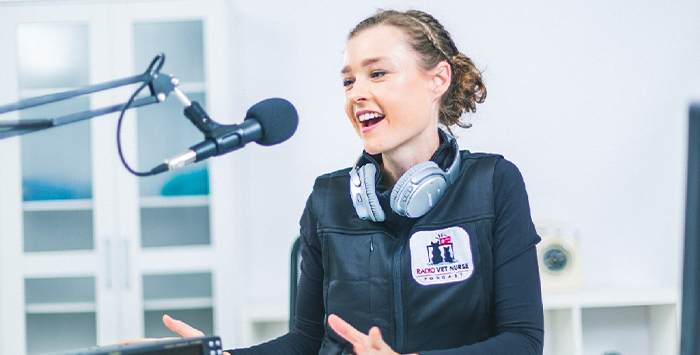
If you already have experience buying podcast cameras, you can skip this if you like. Newcomers usually find the most good-looking and compact camera they can find, but buying a camera is a decision that requires a little more thought.
Here are some of the things you need to consider before buying:
It always comes down to budget, doesn’t it? If you’re a trust fund kid, look away. For the rest of us, the price always matters.
The good thing is if you’re just starting out then you don’t need to spend a lot of money on a high-end or high-performance camera. An inexpensive yet compact camera that is light and easy to set up will suffice.
Professional video cameras can provide you with a wide range of capabilities, high-quality videos, and much better features, but they can also eat into your wallet. The good news is that the video requirements for podcasting aren’t very high, so you don’t have to worry too much about exorbitant prices. You should be able to find an affordable camera capable of recording high-quality videos.
However, if money isn’t really a problem, then feel free to go all out. It’ll be worth it.
The resolution of a camera refers to the number of pixels that may be displayed on a screen. Digital images are made up of pixels, which are little squares. The width x height format is commonly used to express resolution. The higher the resolution, the great the image quality.
For podcasting, a 1920×1080 (1080p) high definition resolution is recommended.
A higher resolution means bigger files, perhaps bigger files than preferred by the video-sharing platforms. Larger-sized videos take longer to load and play, and that may reduce your visibility. 1920×1080 seems to be the optimal resolution for most platforms.
Your camera’s frame rate is the number of individual still photographs or frames it takes each second. The amount of frames collected per second is measured in frames per second (FPS).
Most videos are shot at 24 or 30 frames per second, although many cameras have quicker frame rates that can be used in various ways. 24, 25, 30, 48, 50, and 60 are the most prevalent.
If you’re making podcasts for social media or YouTube, you can film at 30 frames per second, which is the most commonly used and viewed format for shared videos and live streaming.
Aside from image quality or video resolution, you need to consider audio quality before buying a podcast camera.
Yes, you likely already have dedicated equipment for audio recording like a podcast microphone (if you don’t, check out our list of the best budget podcast microphones), but you may not have it on you all the time.
Before getting a podcast camera, do a few tests where you record audio with your camera first or look for buyer’s guides like this one to give you a rough idea of its sound quality.
One of the most common problems with podcast cameras is the recording limit. The recording limit is the maximum amount of time a video camera can record videos without need to stop recording.
The industry standard is 30 minutes, and since many podcasts are LONG, you can see why this poses a problem. Many video cameras have no recording restrictions, and we’ll cover some of those.
You can also bypass a camera’s short memory by linking it to an external storage device.
If you’re recording, you’ll probably move a lot. There will be a lot more motion if you have a guest or multiple guests. Your camera must be able to focus on you and your movement decisively.
You’ll need a camera with great autofocus for this. Good autofocus or auto mode helps the audience to focus too. Most of the cameras in this guide handle autofocus at around the same level.
When recording a video, image stabilization helps too, of course, stabilize your image. The true outcome is the elimination of blurring.
By compensating for camera angularity and continuous shakiness, the blurring caused by camera movement can be reduced.
One advantage of having the best image stabilization is that you can shoot podcast videos with a slower shutter speed if you want. In-body stabilization cameras provide you with more freedom of movement, allowing more dynamism.
As stated earlier, podcasts and live streaming can go very long. You want to make sure you capture the entire video recording without running out of battery. A long battery life is a must filming podcasts.
If you buy a camera for podcasting without investigating battery performance, you might find yourself in a situation where you’ve only captured part of the show.
Continuous shooting can use an entire battery fairly quick. So make sure to double check battery life and test shooting video throught-out your podcast or live stream to make sure your video camera can make it.
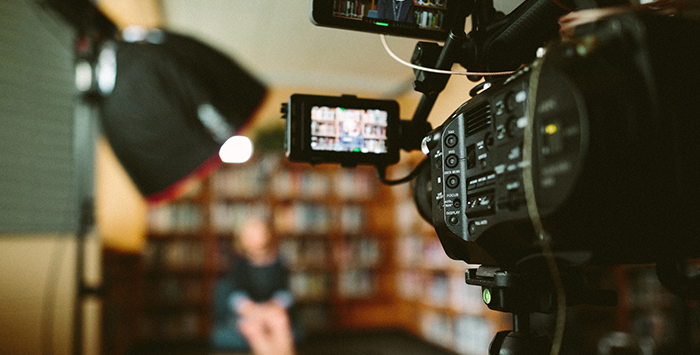
The kind of video camera you use depends on you and the goals of your podcast. Three types of cameras are great for podcasting: still cameras, camcorders, and external webcams.
A still video camera captures still images and saves them as video frames. It can be a DSLR camera a point-and-shoot camera, or a mirrorless camera.
These cameras typically have great resolution and video quality. They also come with a wide range of lenses, so you can choose the one that best suits your podcast.
Camcorders are known for having better built-in microphones than other types of video cameras. They also have better preamps, and some might come with XLR inputs letting you choose a higher quality XLR microphone.
If you need camera for podcasting that has great video quality and is portable, you should definitely try out camcorders.
External webcams are small cameras that normally sit on a desk, are attached to a laptop, or are mounted on a stand or tripod and must be manually set up. They typically include specialized video recording components and produce good video quality.
If you’re going to be hd live-streaming your podcast, they are the best for it. The downside to using webcams for podcasting is that they’re not very suitable for co-hosted episodes unless the co-host is using recording with their own camera remotely.
Yes, you can.
Webcams, especially modern ones, are pretty good at recording video content. They’re more restrictive and of inferior quality to other types of cameras, but if you don’t need anything special, a webcam is good enough.
Webcams can be built-in or external. Built-in webcams are alright if you have a laptop with a quality camera and you’re working on a tight budget. If it’s good enough, you won’t have to shell out extra cash for another camera.
Also, if you plan to edit your video podcast in your computer’s editing software, using your built-in computer webcam is a quick way to speed up your process.
Unfortunately, the cameras are rarely good enough, even with the best computers. Built-in computer webcams often have lesser resolutions than dedicated webcams, still cameras, and video cameras.
Most external webcams require very little initial configuration or come with installation drivers and work immediately after being plugged in.
Now that you know what to look for in a suitable camera for podcasting, it’s time to get into the best podcast cameras you can find in the market today.
These are some of the best cameras to use for podcasting:
$199
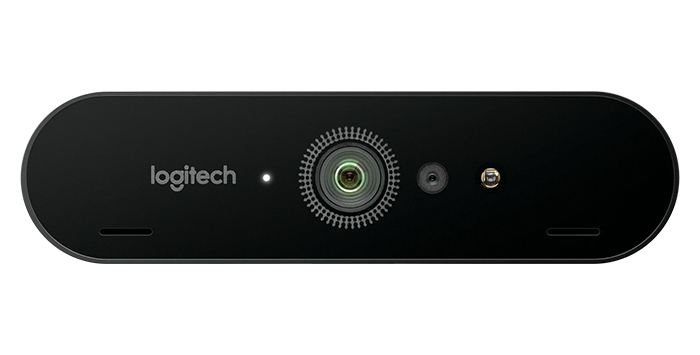
Logitech’s Brio Ultra HD Pro Business Webcam is a great webcam that delivers crystal-clear video with excellent quality alongside switchable frame rates, great detail, and a 5x HD zoom.
Brio offers a host of features not common with most webcams such as auto white balance, competent autofocus, and three fields of vision. Brio shoots 4K Ultra HD video at 30 frames per second, HD 1080p at 30 or 60 frames per second, and HD 720p at 30, 60, or an ultra-smooth 90 frames per second for exceptional clarity, smoothness, and detail.
It comes with a microphone that captures audio clearly but only a meter away. You can’t really count on them if you want flexibility or if you’re recording multiple speakers. For what it’s worth, it also has noise-canceling technology for natural and clear interactions. This helpful feature is great for both recorded and live podcasts, as well as in-person interviews.
You’ll need macOS 10.10 or later, Windows 7 or later, or Chrome OS Version 29.0.1547.70 or later to work the Logitech Brio.
$780
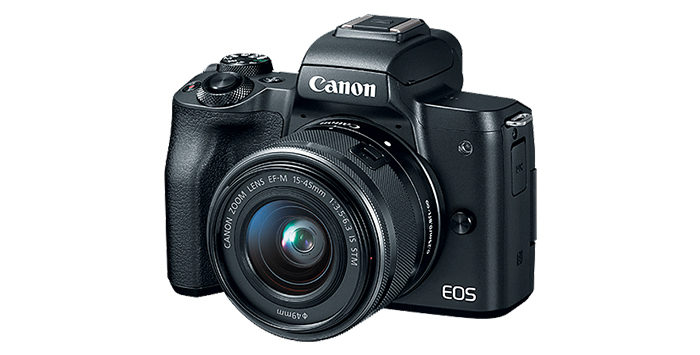
The EOS M50 is Canon’s premium entry-level camera, and as far as entry-level models go, it’s up there with the best. At $780, this camera is a little pricey but totally worth it if you have the spare cash. The EOS M50 is an excellent choice if you want a quality camera that’s easy to use.
The Canon EOS M50 is a mirrorless camera with an electronic optical viewfinder, fully articulating touchscreen, and single control dial. It has an APS-C sensor of 24 megapixels. The battery life is alright for its range. CIPA rated at 235 shots per charge.
It is the first Canon mirrorless camera capable of shooting 4K films and 4K timelapse footage and stills at 4K. You also get a seamless connection via the free Camera Connect app on Android and iOS. It also allows for Wi-Fi, NFC, and Bluetooth LE connections if you need those.
For newbies to video podcasting, the EOS M50 remains the most accessible and practical EOS M camera.
$430
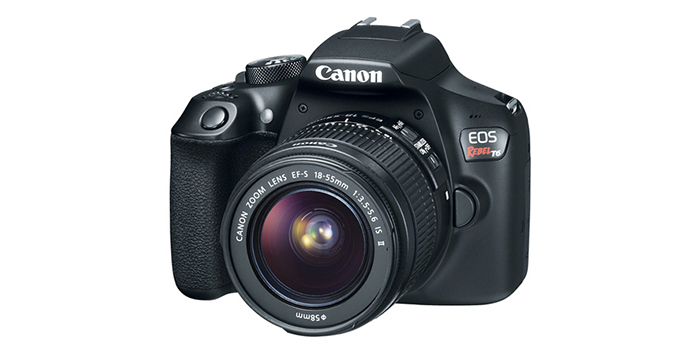
The Canon EOS Rebel T6 is great to use if you’re just getting started with video podcasting. The Canon EOS Rebel T6 offers great video capturing performance, quality, and simplicity, with the ability to shoot in various recording sizes and frame rates. It features full HD (1920 x 1080) video recording and manual video control, with 30, 25, and 24fps selectable frame rates.
The Rebel T6 features an 18-megapixel sensor and an improved DIGIC 4+ image processor. Its camera provides simple video capture with stunning full HD resolution. It also allows for in-camera editing and easy manual control of exposure, focus, and Live View capabilities. It has built-in Wi-Fi connectivity, making wireless functions simple and convenient.
It can give precise focus whether the camera is angled in portrait or landscape mode, thanks to its 9-point AF system. Depending on the aperture and the amount of light available, the system switches between normal and high-precision focus to provide sharp detail in your footage.
It has a 500-shot battery life, which should last you through a regular day of shooting without needing to recharge. This is a great budget-friendly camera to have if you don’t want to compromise on quality.
$600
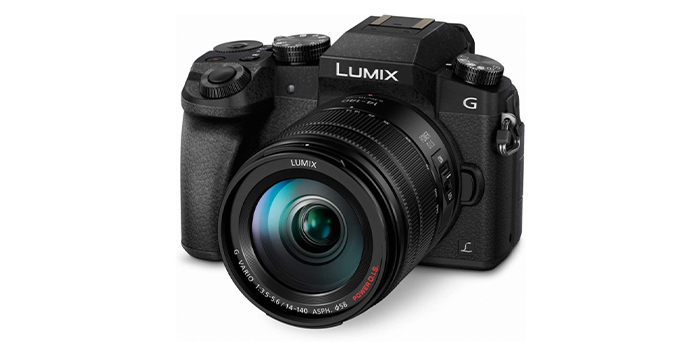
The Lumix G7 from Panasonic is a wonderful place to start if you want to take your podcasting broader. This digital camera has an excellent dynamic range with great image stabilization.
It’s a capable mid-range, mirrorless system camera that anyone looking to upgrade from inexpensive models should consider. It captures crisp 4k video and is packed with cool features like Wi-Fi, timelapse, silent shooting up to 1/16000, and up to seven-frame bracketing.
The Panasonic Lumix G7 creates a flat, low-contrast color profile that video makers like because it is an excellent starting point for software color grading. It comes with touchscreen controls for autofocus, tracking focus, and spot metering, as well as manual control over shutter speed, aperture, ISO speed, and volume control while recording.
The G7 features a lithium-ion battery pack that Panasonic says can be recharged externally for roughly 360 shots per charge.
$650
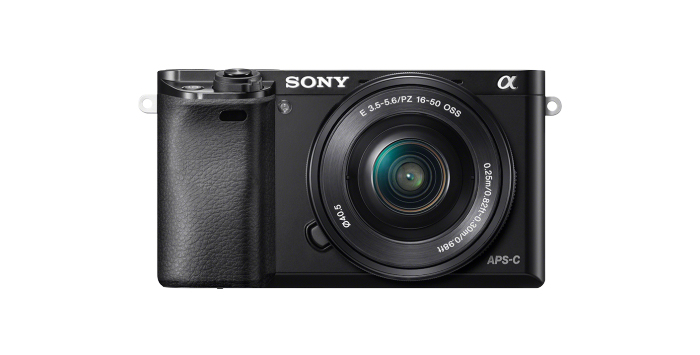
Next on the list is the Sony Alpha a6000. The Sony Alpha A6400 is one of the best cameras for podcasting due to a few unique features.
This is a mirrorless camera with a small form factor. Its small size makes it both versatile and convenient for users who don’t do a lot of camera work like podcasters.
The Sony Alpha 6000 delivers fast and advanced hybrid auto-focusing technology for filmmaking and podcasting. It comes with a sophisticated APS-C camera with a 24.2-MP Exmor CMOS sensor, as well as Real-Time object Tracking and Real-Time EYE Auto Focus. To top it up, it employs some of the most recent contrast detection technology.
The Sony a6000’s wide appeal is one of its best features. It has features for both beginners and experts and is very solidly built. It can shoot videos with its auto-focus performing well in low light situations.
$400
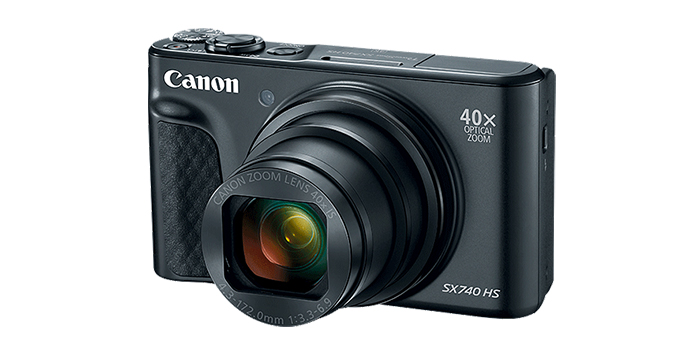
The SX740 HS is a small point-and-shoot camera that falls squarely between entry-level and mid-range level. It is a compact device small enough to fit in a pocket.
A little dial on the top plate of the SX740 allows you to select from a variety of shooting settings. All settings can be controlled manually, but this camera allows for semi-automatic control.
The PowerShot SX740 HS can capture 4K at 30 frames per second, and the video quality is pretty good. The SX740 has a quick and accurate autofocus system to match.
Its sound recording quality is average at best but not much worse than the best cameras in this range. Keeping the camera close to you should help eliminate background noise, as the microphone has no noise reduction of its own. You’ll definitely need an external microphone for this one.
As for the battery, it offers 265 photos on a single charge and supports USB charging which is a big plus.
$600
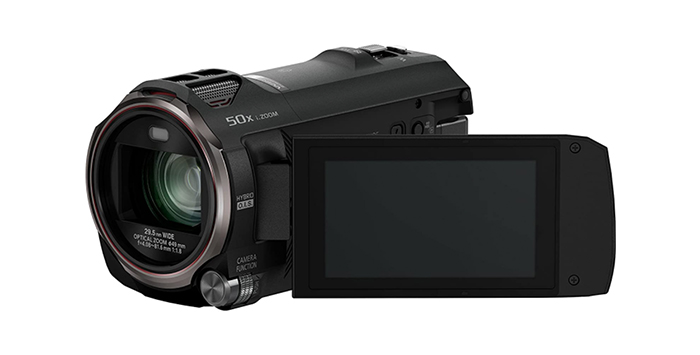
If you’re looking for a high-quality, affordable, easy-to-use camcorder, the Panasonic HC-V770 has all the features you’ll need from an entry-level HD camera.
It delivers excellent HD footage but maxes out at 1080p. This isn’t a big problem because, as I pointed out earlier, most video-sharing platforms don’t support currently 4k videos anyway.
The HC battery V770’s life is excellent, with three and a half hours of filming time. The camcorder has a multi-microphone array on the front to record 5.1 surround sound, but there’s room for an additional microphone.
Quite a few people are put off at first by its default mode, which is very compressed, but this can easily be changed.
$850
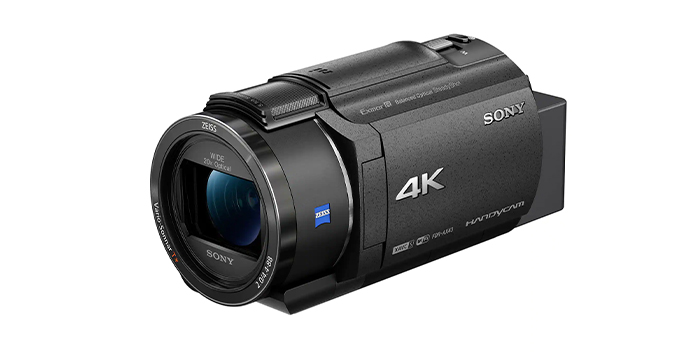
The Sony FDR-AX43 is a compact camcorder popular among both pros and amateurs due to its ease of use. When shooting, it has a built-in gimbal system to keep your motion smooth.
It supports up to 4k shooting and has a solid face autofocus system. It also has a multiple-camera control system that allows you to connect with multiple nearby Sony cameras via WiFi. If used, this gives you better shot synchronization and image stabilization.
Three built-in microphones gather up audio in a cardioid pattern (to learn more about cardioid patterns check out our article on microphone pickup patterns).
A single SD card is used for storage.
The battery is a lithium-ion rechargeable battery that can record for up to 150 minutes when fully charged.
$350

The GoPro Hero 10 Black is a great tiny, easy-to-use camera that ticks most of the boxes for a podcast camera.
It has a built-in touchscreen that allows you to easily monitor and control the outcome of your videos while podcasting. The camera now starts up much faster than the old version, which was a common complaint. Wireless transfers are 30% faster too, and there’s a new wired transfer mode that can make things even faster. The touch screen is also noticeably much more responsive.
The audio quality of the microphone is satisfactory. However, it wouldn’t do for proper recording. An additional microphone is recommended here.
You can also live-stream your podcast to YouTube or any other social streaming network with the Hero 10 Black.
The Hero 10 can capture footage in up to 5.3K and 4K resolutions. It comes with a HyperSmooth function that softens your image, giving it an extra smooth look.
It comes with a 1720 mAH lithium-ion rechargeable battery that should last around 1½ to 2½ hours after every full charge.
If you’re trying to expand your podcast and build it commercially, you should try out video podcasting. You’ll need at least a semi-professional camera for this, but the market is large and ever-changing, so most buyers need some sort of guide.
If you’re really serious about your podcast and you want to take it all the way, you’ll have to shell out some cash for one of the best cameras for podcasting. Above we’ve discussed a few of the best cameras that should be able to cover all the bases.
We hope this serves as a useful guide on what you need for a successful video podcast and helps you pick out the best video camera for your podcast. Good luck.